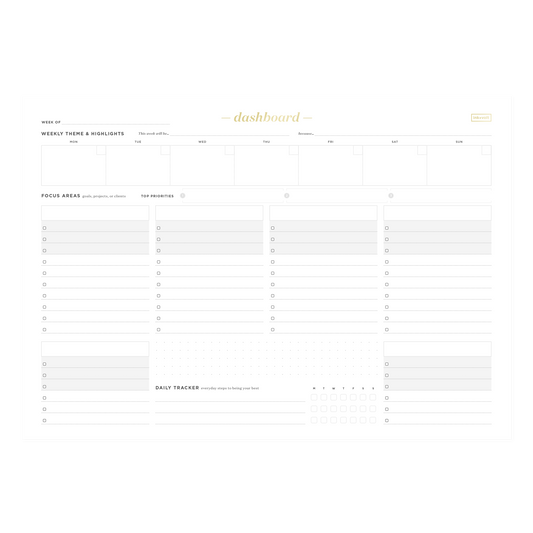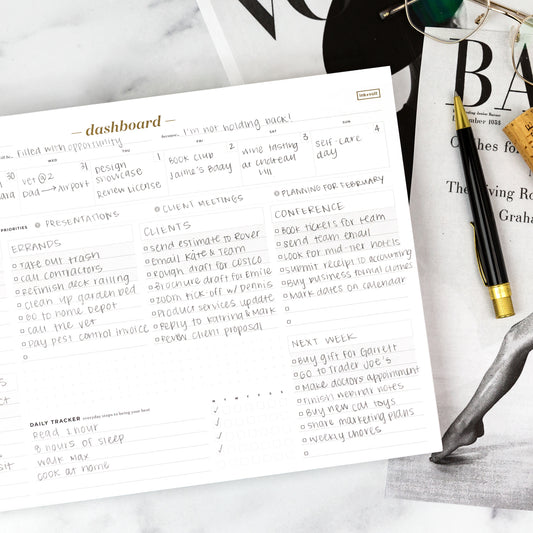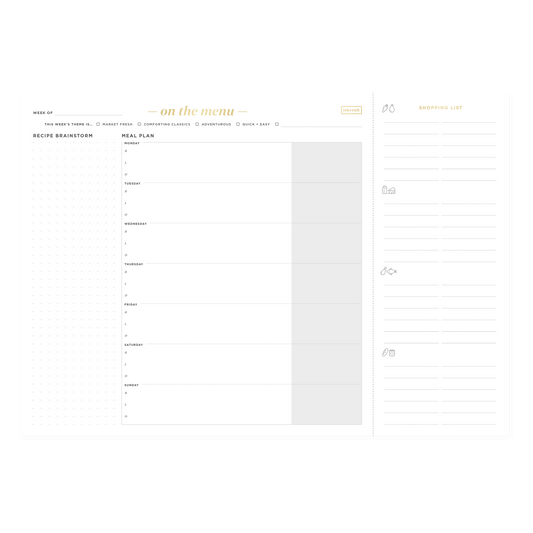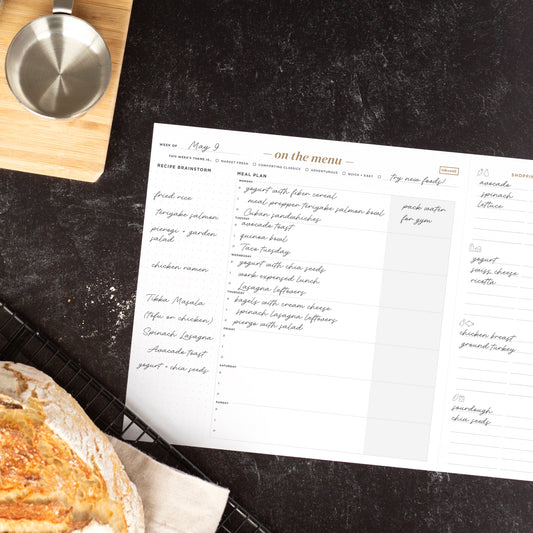You know goal-setting is key to success.
Leaders, influencers, and entrepreneurs from Silicon Valley to Wall Street talk about the importance of having a roadmap with a clear destination.
Facebook executive Julie Zhou recently told CNBC that she starts every Monday by setting her weekly goals. She thinks about what she wants to have accomplished by Friday evening and works backwards, breaking her week-long goals up into smaller, more manageable tasks.
We’ve shared lots of resources here on the blog to help you articulate and set better daily, monthly, and yearly goals. But are you setting smart goals?
Here's a quick check. Take a look at these two similar goal statements:
- Launch a marketing newsletter
- Launch a weekly marketing newsletter by the end of the fiscal year that will deploy each Tuesday to communicate important product release news to subscribers.
Which of these is the stronger goal?
If you said number 2, you’re right. And here’s why: It’s specific, it sets a deadline, and it defines how I will measure my success.
Now, what do your current goals look like? Are they more like #1 or #2?
Good goals — whether they're professional or personal — start with a strong goal statement. By clearly writing out your goal in full in a goal statement, you’re setting yourself up for success by defining your priorities, guiding your focus, and explicitly laying out the actions you will take.
You may have heard of a goal-setting system called SMART goals. If you’ve been looking for a SMART goals template, look no further! We have broken it down here in a quick read with a free worksheet to help you get started.
What is the SMART goals template?
All SMART goals are formatted in the same way. This uniform structure is one of the things that makes this strategy so successful; your goals are forced to fit within a framework that is the same every time and hits the same important touchpoints. This helps you avoid making goals that are too vague, too difficult, or that won’t move you where you want to be in life.
SMART goals are goals that are (S) specific, (M) measurable, (A) attainable, (R) relevant, and (T) time-bound.
Let’s break all those down elements of the SMART goals template down:
S - Specific
When setting a goal, it’s important to be as specific as possible so that you know exactly what your objective is and what success will look like. A specific goal will be unambiguous, leaving no room for interpretation, which will help keep you on track.
For example, instead of setting a broad and vague goal for myself like “run more,” a more specific goal would be “go for a run three times a week.” Even more specific than that? “Go for a run every Monday, Wednesday, and Saturday.”
When you’re thinking about how to make your goal more specific, you want to make sure that it answers the following questions:
- What? - What *exactly* do I want to accomplish?
- Why? - Why do I want to achieve this goal?
- When? - What’s my schedule or timetable for achieving this goal? (We’ll come back to this in the “T” section!)
- Who? - Who needs to be involved? (This may not always be relevant.)
- How? How, exactly, am I going to do this?
Now, let’s revisit my original goal and make it more specific: I want to run more frequently so I can compete in a half marathon this fall. So I’m going to start running three times a week: every Monday, Wednesday, and Saturday.
M - Measurable
Being able to measure your progress is one of the most crucial parts of smart goal-setting. In fact, the way your performance or progress will be measured should always be a part of your goal statement. As you’re crafting your goal, ask yourself: How will you identify success?
For example, if my goal was to write a novel, I might make this big idea more measurable by saying I’m going to write a 60,000 word novel by the end of the year. Then I’d break that down even further: I’m going to get to 60,000 words by writing 2,000 words by Saturday morning each week.
A - Attainable
Setting lofty goals is not a bad thing, but in order for them to be smart goals, you need to make sure they’re also attainable.
A good goal should be a stretch for you or your team. It should probably require hard work. But it should not be impossible.
Here are a few questions to ask yourself to gauge if your goal is actually attainable:
- Is this realistic?
- Is what I’m committing to meet this goal reasonable?
- Is this in my control?
If the answer to any of those questions is no, you may need to go back to the drawing board.
R - Relevant
The next step in smart goal setting is to consider whether or not this goal is relevant. A good goal should not be in conflict with other, larger priorities.
This is especially important to keep in mind if you’re a leader at work. When you’re setting goals for your team, be sure that they’re tasks or responsibilities that will motivate your team and make them feel like they’re making a meaningful contribution. Are you helping them to do work that really matters? Are you helping them achieve their goals or your overall goals for the team?
One great way to do this is to be sure to explain the “why” behind your ask.
For example, if I set a goal for one my team members to create a social media analytics report by the end of the week without any context, there’s a good chance she might feel like I’m giving her busy work, or worse, assigning her something that I just don’t want to do.
But if I present the goal to her in a way that provides more context for its relevance — maybe by explaining that I’ll need her help to present the data in a key meeting next week that will help inform how we execute our next campaign — she’ll realize that her work is consequential and has an impact, which in turn will drive better results.
Here are some questions to consider when evaluating the relevance of a goal:
- Is this goal related to larger business priorities?
- Is this goal moving my career in the right trajectory?
- Is this goal pushing me to be the type of person that I want to be?
- Is this goal helping me to live the kind of life I want to lead?
T - Time-Bound
Every goal needs a deadline. Whether you’re a procrastinator like me or someone who works in advance, deadlines are crucial to ensuring that your smaller, everyday tasks don’t get in the way and distract from larger goals. If you’re working on a long-tailed project, that might mean you need to break the goal down into smaller milestones.
Like I said, I’m a procrastinator, so this is where my Ink+Volt Planner comes in super handy. By building in monthly and weekly check-ins on my long-term goals, I’m able to break them down into more measurable chunks, and set up specific moments to review my progress.
If you’re struggling to set a reasonable timeframe for your goals, here are some questions to ask:
- What can I reasonably get done in a day/week/month/year?
- What should this project look like when it’s halfway done?
- When does this absolutely need to be finished?
Here's a SMART Goal template to help you get started writing better, stronger, more attainable goal statements: click here to download your free SMART goals template!










